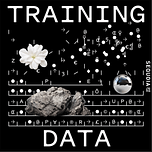Post methodology: Claude 3.7 via custom Dust assistant @TDep-SubstackPost with the system prompt: Please read the text of the podcast transcript in the prompt and write a short post that summarizes the main points and incorporates any recent news articles, substack posts or X posts that provide helpful context for the interview. Please make the post as concise as possible and avoid academic language or footnotes. please put any linked articles or tweets inline in the text. Please refer to Podcast guests by their first names after the initial mention. Light editing and reformatting for the Substack editor.In this episode, Paul Eremenko, CEO of P-1 AI, shared his company's mission to build engineering AGI for the physical world. While companies like Anthropic and Cursor are transforming software engineering, hardware engineering has yet to experience the same AI revolution.
Paul explains the fundamental challenge: training data. "If you want an AI engineer that can help you design an airplane... your model has to be trained on millions of airplane designs, ideally. And there just haven't been millions of airplanes designed since the Wright brothers." This data scarcity has kept most AI labs from tackling physical engineering.
P-1 AI's solution? Creating synthetic, physics-based training data that's informed by real-world supply chains. This approach isn't entirely new—co-founder Susmit Jha's 2011 dissertation was an early exploration of program synthesis for complex systems. By generating millions of hypothetical designs with performance vectors, their models learn what works and what doesn't.
BONUS ESSAY: The Promise and Perils of Synthetic Data in AI
The company's first product, an AI agent named Archie, isn't designed to replace existing engineering tools but to use them like a human would. Archie performs key engineering tasks like distilling requirements, sizing components, and detailed design analysis through a federation of specialized models orchestrated by an LLM.
To measure Archie's capabilities, P-1 AI has adapted Bloom's Taxonomy to engineering tasks, creating what they call "Archie IQ." This evaluation system, detailed in their recent paper "On the Evaluation of Engineering Artificial General Intelligence," measures everything from basic information recall to sophisticated design synthesis and self-reflection.
P-1 AI has a clear scaling roadmap: start with simpler systems (currently data center cooling with 1,000 unique parts) and progress by an order of magnitude yearly, eventually reaching aerospace systems (1 million parts) and beyond. Paul's long-term vision extends beyond efficiency gains to designing things humans can't yet imagine - the starships and Dyson spheres promised in hard core science fiction.
Rather than selling software, P-1 AI positions Archie as a remote team member who "shows up on Slack or Teams" to handle engineering tasks. When asked about AI's inherent randomness—what Sequoia partner Konstantine Buhler calls "the stochastic mindset"—Paul points out that humans are also "pretty stochastic," and existing engineering processes already have checks and balances to catch errors.
With Jeff Dean predicting 24/7 AI junior software engineers within a year, P-1 AI's work suggests a similar revolution could be coming to physical engineering. As Paul recommends, perhaps it's time to revisit Isaac Asimov's Robot series (1940-1995)—its laws of robotics were "very carefully thought out, and are a lot of what actually needs to be built somehow very deeply into these models to ensure alignment."
Hosted by Sonya Huang and Pat Grady
Mentioned in this episode:
Dyson sphere: a hypothetical structure surrounding a star that captures its power output, first proposed as a thought experiment by physicist Freeman Dyson in 1960.
Towards Automated System Synthesis Using SCIDUCTION: P-1 AI co-founder, Susmit Jha’s 2011 PhD on program synthesis
On the Evaluation of Engineering Artificial General Intelligence: 2025 paper describing P-1’s approach to evals
Bloom’s Taxonomy: A cognitive knowledge taxonomy for human learning developed by Benjamin Bloom in 1956, now applied to LLMs
Isaac Asimov, Robot Series: Set of short stories and novels published between 1940 and 1995 that Paul says are highly prescient
The Stochastic Mindset: Essay by Konstantine Buhler based on Training Data episode with Dust founders Gabriel Hubert and Stanislas Polu
Archetype: Ai company that Paul mentions that is working on a foundation model for ingesting sensor data
Archie biopic: AI generated short film produced for P-1 by EyeMix











Share this post